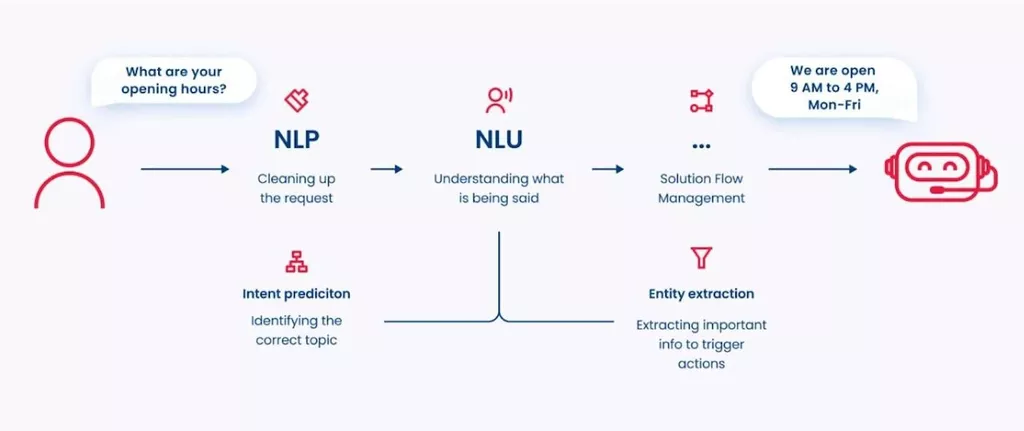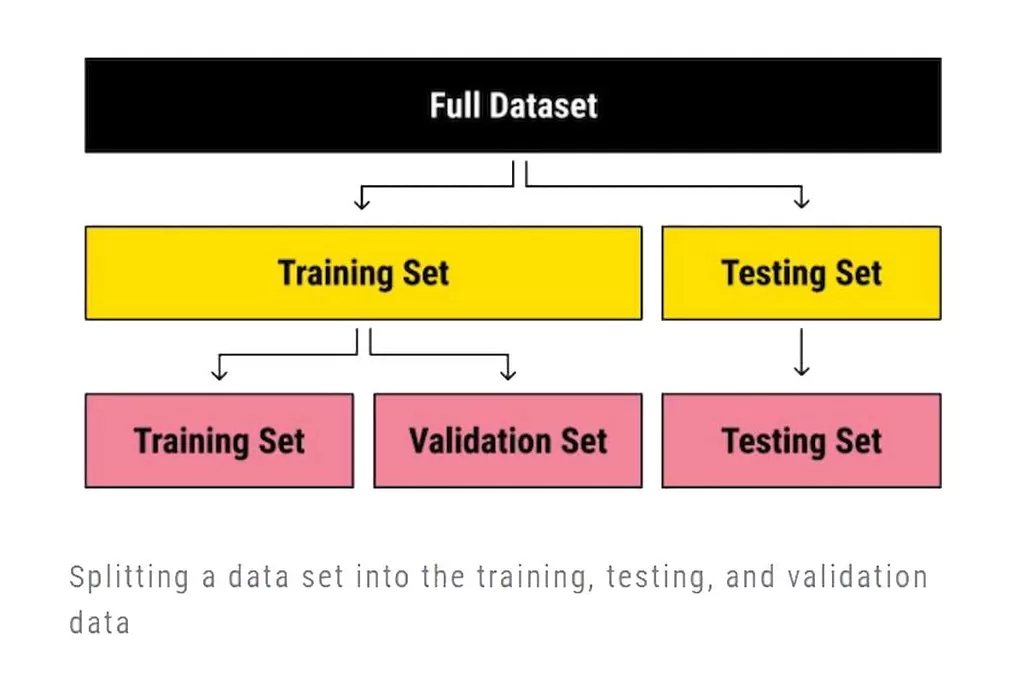How to Use and Train a Natural Language Understanding Model

In the era of advanced artificial intelligence (AI), Natural Language Understanding (NLU) models are leading the charge in shaping how businesses interact with their clients, stakeholders, and even amongst themselves. Derived from the field of machine learning, NLU models are crucial components of AI systems, facilitating the comprehension and interpretation of human language into a machine-understandable format.
Over time, NLU models have become indispensable tools for businesses across various sectors, bolstering their capacities to handle large volumes of data, automate customer service, and streamline other core business operations. Furthermore, when properly trained, these models can significantly enhance business communication, fostering improved customer relationships and enabling more effective decision-making. For this reason, we want to tell you how to train NLU models and how to use NLU to make your business even more efficient.
The science behind NLU models
At the very heart of natural language understanding is the application of machine learning principles. These algorithms are designed to understand, interpret, and generate human language in a meaningful and useful way. They feed on a vast amount of data, learning from the patterns they observe and applying this knowledge to make predictions or decisions.
Within the broader scope of artificial intelligence and machine learning (ML), NLU models hold a unique position. They go beyond the capabilities of a typical language model to not only recognize words and phrases but also understand their context, intent, and semantics. For instance, if presented with the sentence “The temperature is rising high, I might go swimming,” an NLU ML model wouldn’t just recognize the words but understand the intent behind them.

We are confident that we have what it takes to help you get your platform from the idea throughout design and development phases, all the way to successful deployment in a production environment!
How industries are using trained NLU models
Enterprises across numerous industries are rapidly adopting NLU and reaping substantial rewards. A prime example of NLU machine learning how industries train models is the financial services sector with its short-term and long-term forecasting. These models are capable of deciphering complex financial documents, generating insights from the vast seas of unstructured data, and consequently providing valuable predictions for investment and risk management decisions.
Meanwhile, in the healthcare industry, NLU models have been employed to analyze patient records, research papers, and other forms of unstructured medical data, enabling the extraction of crucial information that significantly improves patient care and the development of novel treatments.
Retail businesses are not left out either, as they harness the power of natural language understanding models in their customer service departments, using conversational AI to understand customer requests and complaints, leading to enhanced customer satisfaction.

How to train NLU models: A step-by-step guide
Training a natural language understanding model involves a comprehensive and methodical approach. The steps outlined below provide an intricate look into the procedure, which is of great importance in multiple sectors, including business.
Collecting and preparing NLU training data
The first step in answering the question “how to train NLU models” is collecting and preparing data. In machine learning, data serves as the raw material; the quality and relevance of the data directly impact the model’s performance. The process of training an NLU model starts with data collection. This data could come in various forms, such as customer reviews, email conversations, social media posts, or any content involving natural language.
After the data collection process, the information needs to be filtered and prepared. Such preparation involves data preprocessing steps such as removing redundant or irrelevant information, dealing with missing details, tokenization, and text normalization. The prepared info must be divided into a training set, a validation set, and a test set. This division aids in training the model and verifying its performance later.

NLU design model and implementation
It involves selecting an appropriate machine learning architecture. Common architectures used in NLU include recurrent neural networks (RNNs), long short-term memory (LSTM), and transformer models such as BERT (Bidirectional Encoder Representations from Transformers). The choice depends on the problem at hand and the resources available.
Once the design is selected, it is implemented using machine learning frameworks like TensorFlow or PyTorch. Such a process involves coding the model architecture and specifying parameters like the learning rate, the loss function, and the optimizer.
Model training, testing, and refinement
After the implementation, the model is trained using the prepared training data. It involves exposing it to the data and allowing it to make predictions. The model learns from its errors and adjusts its internal parameters accordingly in an iterative process.
Upon reaching a satisfactory performance level on the training set, the model is then evaluated using the validation set. If the model’s performance isn’t satisfactory, it may need further refinement. It could involve tweaking the NLU models hyperparameters, changing their architecture, or even adding more training data.
Once satisfied with the model’s performance on the validation set, the final test is done using the test set. This set of unseen data helps gauge the model’s performance and its ability to generalize to new, unseen data.
Deployment
With a successful model in hand, the next step is to integrate it into a production environment. It might involve embedding it into an application, like a chatbot or a voice assistant, or making it available through an API.
Challenges and best practices
While the training process might sound straightforward, it is fraught with challenges. Data collection can be a time-consuming process. The choice of the right model, hyperparameters, and understanding of the results requires expertise in the field.
However, these challenges can be mitigated by following best practices. Start with a clear understanding of the problem and ensure that the collected data is representative of the problem domain. Regular evaluation of the model’s performance and fine-tuning based on results is crucial. Finally, staying updated with advancements on how to train NLU models will provide insights into new techniques and best practices.
Putting trained NLU models to work
Integrating and using these models in business operations seem daunting, but with the right knowledge and approach, it proves transformative. Trained NLU models sift through unstructured data, interpret human language, and produce insights to guide decision-making processes, improve customer service, and even automate tasks.
To integrate NLU models into your business, the first step is understanding the scope of their potential applications. They are used in areas such as:
- Unstructured data analysis: Trained NLU models sift through unstructured data, interpret human language, and produce valuable insights. These insights guide decision-making processes and improve customer service.
- Automation of tasks: They also automate various tasks, thereby increasing operational efficiency and productivity.
- Understanding potential applications: The first step in integrating these models into a business is understanding their potential applications. It could include customer service, where they can interpret customer queries and provide accurate responses, or data analysis, where they interpret large volumes of written data to extract actionable insights.
- Application in customer service: NLU models can significantly enhance customer service interactions by understanding customer queries and providing personalized and accurate responses.
- Application in data analysis: Natural language understanding models analyze large volumes of written data, enabling businesses to extract actionable insights that inform their decision-making processes.
- Use in conversational AI: These models play a critical role in conversational AI strategies. They allow AI chatbots to understand user inputs, no matter how complex or ambiguous, and respond in an engaging, human-like manner. This significantly enhances customer service interactions, making them more personalized, efficient, and satisfying for customers.
By leveraging these potential applications, businesses can not only improve existing processes but also discover new opportunities for growth and innovation. Moreover, as NLU technology continues to evolve, it will open up even more possibilities for businesses, transforming industries in ways we are just beginning to imagine.
Start benefiting from NLU models right now
We’ve made a conversational AI that relies on NLU models and simulates human conversations. Our bot can comprehend user inputs, regardless of complexity, and respond in a human-like manner. This significantly enhances customer service interactions and makes them more personalized for clients.
Top Articles
How To Choose AI Software For Your Business?
I am here to help you!
Explore the possibility to hire a dedicated R&D team that helps your company to scale product development.






